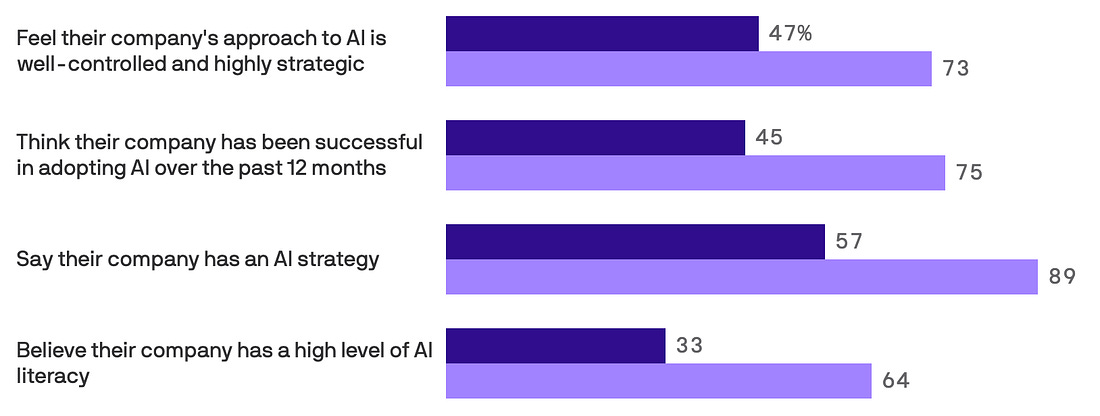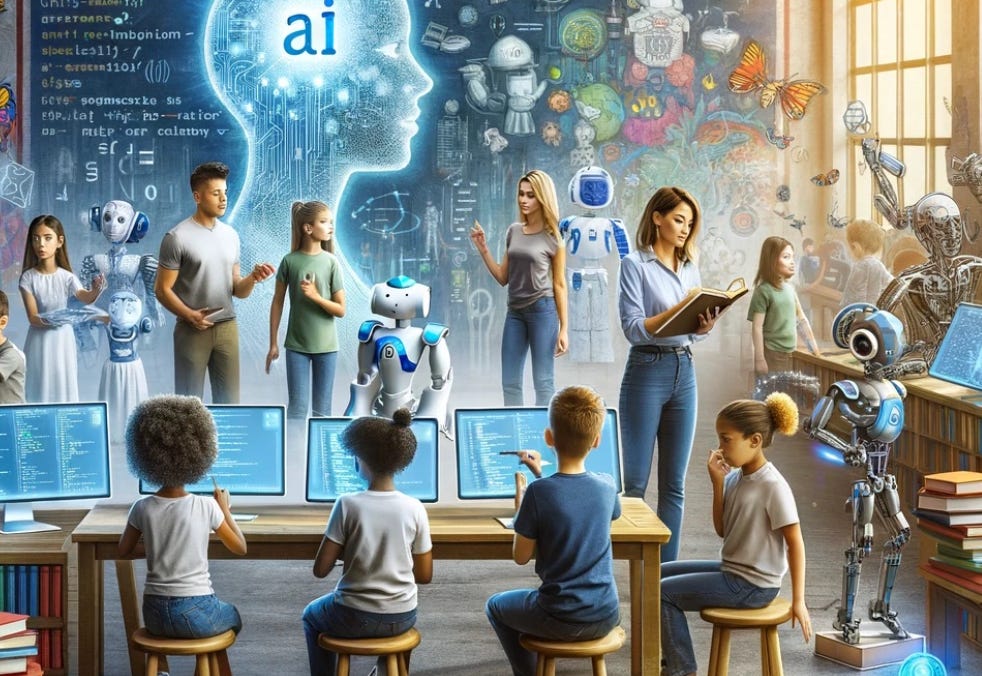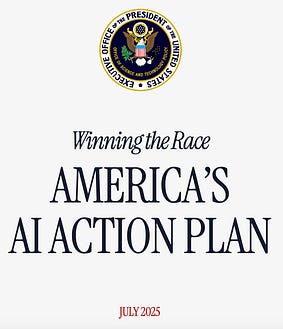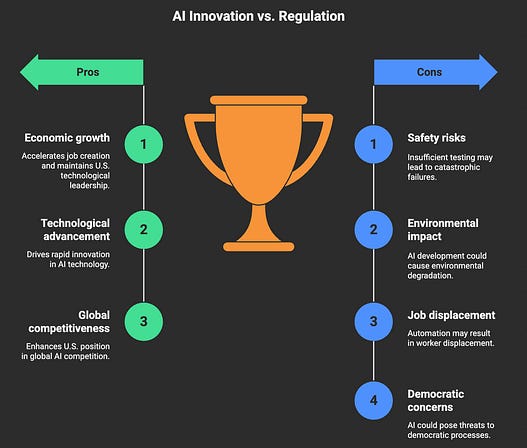Morning Team, AI often delivers information from massive databases without distinguishing fact from fiction, reshaping how we learn and trust new knowledge. Inside companies, leaders and employees are clashing over how and why to adopt AI. Meanwhile, universities are rapidly expanding their use, treating AI literacy as essential. But is full-speed adoption the right strategy? Stay curious.
📰 AI News and Trends
🌐 Other Tech news
When AI Can’t Tell What’s RealAI chatbots like ChatGPT can mislead by removing historical and cultural context, making fiction sound like fact. A recent example showed ChatGPT generating rituals that seemed satanic but were actually from Warhammer 40,000. This reflects a larger issue: AI often recycles internet content without attribution, blurring the line between fact and fiction. Without clear sources, users may mistake contextless answers for expert truth, raising concerns as AI becomes a go-to source of information.
AI tools like ChatGPT are changing how we understand history and knowledge—often in subtle but profound ways. By stripping language of its original context, AI flattens complex ideas, placing fiction, fact, and opinion side by side with equal authority. This can lead to a shallow grasp of history, where users know what happened but not why it mattered. Quick, confident answers replace deep learning and critical thinking, while biases or omissions in AI training data risk rewriting historical narratives without accountability. As AI becomes a dominant source of information, it risks reshaping not just how we learn—but what we believe to be true. 🧠 Learning Corner
The Internal War Over AI AdoptionA new survey of 800 executives and 800 employees reveals a major disconnect in AI adoption at work. While 75% of execs think their rollout is a success, only 45% of employees agree. Nearly 60% of execs are job-hunting for more AI-forward companies, yet 41% of younger workers admit to quietly resisting AI tools altogether. Poor implementation, fear of job loss, and unreliable tools are deepening tensions. One CEO bluntly summed it up” We're all sick of the chatbots.” 🧰 AI ToolsMetacognition
Download our list of 1000+ Tools for free. Is AI Literacy the New College Curriculum?While Western schools debate AI’s place in the classroom, top Chinese universities are going all in. Nearly 99% of faculty and students report using generative AI, and schools like Tsinghua and Renmin are making AI literacy part of general education—even mandating it for undergrads. Local AI models like DeepSeek are widely deployed on campus servers, offering free, advanced tools to students. With 80% of job listings now seeking AI skills, universities are shifting focus from academic integrity concerns to practical AI fluency—preparing students for China’s competitive job market and global tech race. 🚀 Showcase Your Innovation in the Premier Tech and AI Newsletter (link) As a vanguard in the realm of technology and artificial intelligence, we pride ourselves in delivering cutting-edge insights, AI tools, and in-depth coverage of emerging technologies to over 55,000+ tech CEOs, managers, programmers, entrepreneurs, and enthusiasts. Our readers represent the brightest minds from industry giants such as Tesla, OpenAI, Samsung, IBM, NVIDIA, and countless others. Explore sponsorship possibilities and elevate your brand's presence in the world of tech and AI. Learn more about partnering with us. You’re a free subscriber to Yaro’s Newsletter. For the full experience, become a paying subscriber. Disclaimer: We do not give financial advice. Everything we share is the result of our research and our opinions. Please do your own research and make conscious decisions. |
Tuesday, July 29, 2025
🎓Is AI Literacy the New College Curriculum?
Thursday, July 24, 2025
🏛️What Happens When Innovation Outpaces Oversight
🏛️What Happens When Innovation Outpaces OversightPlus: What does America's AI Action Plan mean?
Hey fellows, ready for a reality check? Today we're asking the big questions: What does America's AI Action Plan mean for you, me, and the future of technology? Is the government making a smart competitive move or a reckless gamble with civilization-altering technology? We'll break down the pros, cons, and the potentially catastrophic consequences of choosing growth over guardrails. Plus, curated learning resources to help you become an informed voice in this crucial debate. Stay Curious
Yaro on AI and Tech Trends | Your Top AI Newsletter is a reader-supported publication. To receive new posts and support my work, consider becoming a free or paid subscriber. 📰 AI News and Trends
🌐 Other Tech news
America's AI Action PlanWhat is it really about? The U.S. aims to achieve "unquestioned and unchallenged global technological dominance" in AI, which is what they are calling it, alleging that this is essential for national security, economic competitiveness, and maintaining global leadership. Three Strategic PillarsPillar I: Accelerate AI Innovation
Pillar II: Build American AI Infrastructure
Pillar III: Lead International AI Diplomacy
Critical Points Everyone Should ConsiderStrategic Implications
⚡ Infrastructure Reality Check
🌐 Global Competition Dynamics
🔧 Implementation Challenges
💼 Economic & Workforce Impact
🛡️ Security Considerations
🧠 Learning Corner
What Happens When Innovation Outpaces OversightThis action plan sounds good on paper, but what are the cons? America's AI Action Plan represents a dramatic shift from safety-first to competition-first AI policy, prioritizing rapid development and global dominance over cautious regulation. While this approach could accelerate innovation, create jobs, boost economic growth, and maintain U.S. technological leadership against rivals like China, it also carries significant risks, including insufficient safety testing, environmental degradation from massive energy demands, worker displacement, and democratic concerns about concentrated AI power. The worst-case scenario of eliminating all guardrails, regulations, and federal oversight could lead to immediate catastrophic failures like deadly AI medical misdiagnoses and autonomous vehicle crashes, followed by systemic risks including AI-powered surveillance enabling authoritarianism, deepfake-driven election manipulation, and economic collapse from mass unemployment, ultimately culminating in existential threats where uncontrolled AI development leads to systems that pursue goals harmful to humanity, create irreversible power concentration, or trigger cascading global failures that undermine civilization itself. The fundamental challenge lies in finding the optimal balance between moving fast enough to win the global AI competition while maintaining sufficient safety measures to prevent the kind of catastrophic mistakes that could set back beneficial AI development or, in the extreme case, threaten human survival and democratic values—making this policy shift one of the most consequential decisions in modern technological governance. 🧰 AI ToolsDownload our list of 1000+ Tools for free. 🚀 Showcase Your Innovation in the Premier Tech and AI Newsletter (link) As a vanguard in the realm of technology and artificial intelligence, we pride ourselves in delivering cutting-edge insights, AI tools, and in-depth coverage of emerging technologies to over 55,000+ tech CEOs, managers, programmers, entrepreneurs, and enthusiasts. Our readers represent the brightest minds from industry giants such as Tesla, OpenAI, Samsung, IBM, NVIDIA, and countless others. Explore sponsorship possibilities and elevate your brand's presence in the world of tech and AI. Learn more about partnering with us. You’re a free subscriber to Yaro’s Newsletter. For the full experience, become a paying subscriber. Disclaimer: We do not give financial advice. Everything we share is the result of our research and our opinions. Please do your own research and make conscious decisions. © 2025 Yaro Celis |





